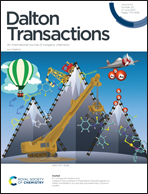Structural composition of antibacterial zinc-doped geopolymers†
Abstract
Elucidating the structural composition of a three-dimensional amorphous sodium-aluminosilicate-hydrate (Na2O–Al2O3–SiO2–H2O, N–A–S–H) gel in geopolymers is a prerequisite for its prevailing application in biomaterials, construction, waste management, and climate change mitigation. An unsolved challenge in geopolymer science is the clear structural understanding of amorphous N–A–S–H doped with desired metals. Here, we uncover the molecular structure of (Zn)-N–A–S–H, confirming the tetrahedral coordination of Zn with O and the presence of Si–O–Zn bonds. The Zn–Si distance of ∼3.0–3.1 Å proves the connection of the corners of ZnO42− tetrahedra and SiO4 tetrahedra by slight twisting. The stoichiometric formula of the ZnO-doped geopolymer is quantified as (Na0.19Zn0.02AlSi1.74O5.095)·0.19H2O. The remarkable antimicrobial efficacy of the Zn modified-geopolymer in inhibiting the formation of biofilms by the sulphur-oxidising bacteria Acidithiobacillus thiooxidans and inhibiting biogenic acidification is evidenced. The biodegradation process of the geopolymer featuring the rupture of the Si–O–Al and Si–O–Zn bonds of the networks leads to the expelling of tetrahedral AlO4− and ZnO42− from the aluminosilicate framework and the eventual formation of the siliceous structure. This work demonstrates that the (Zn)-N–A–S–H structure of our new geopolymer provides a solution to optimising geopolymer materials and provides further possibilities for designing novel geopolymer composites for use in construction materials, antibacterial biomaterials in dental or bone surgery, and management of hazardous and radioactive waste.



 Please wait while we load your content...
Please wait while we load your content...